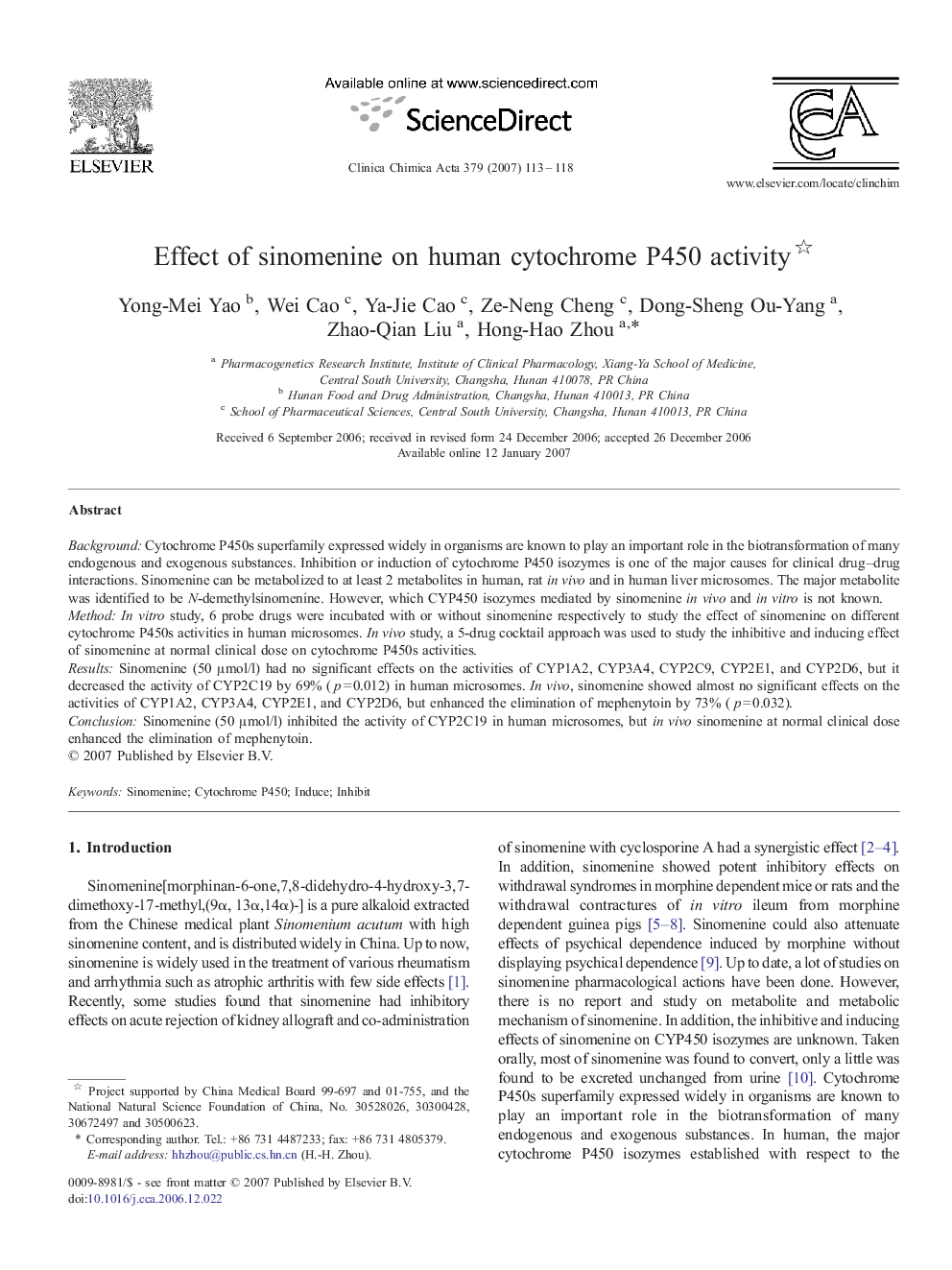| Article ID | Journal | Published Year | Pages | File Type |
|---|---|---|---|---|
| 1967786 | Clinica Chimica Acta | 2007 | 6 Pages |
BackgroundCytochrome P450s superfamily expressed widely in organisms are known to play an important role in the biotransformation of many endogenous and exogenous substances. Inhibition or induction of cytochrome P450 isozymes is one of the major causes for clinical drug–drug interactions. Sinomenine can be metabolized to at least 2 metabolites in human, rat in vivo and in human liver microsomes. The major metabolite was identified to be N-demethylsinomenine. However, which CYP450 isozymes mediated by sinomenine in vivo and in vitro is not known.MethodIn vitro study, 6 probe drugs were incubated with or without sinomenine respectively to study the effect of sinomenine on different cytochrome P450s activities in human microsomes. In vivo study, a 5-drug cocktail approach was used to study the inhibitive and inducing effect of sinomenine at normal clinical dose on cytochrome P450s activities.ResultsSinomenine (50 μmol/l) had no significant effects on the activities of CYP1A2, CYP3A4, CYP2C9, CYP2E1, and CYP2D6, but it decreased the activity of CYP2C19 by 69% (p = 0.012) in human microsomes. In vivo, sinomenine showed almost no significant effects on the activities of CYP1A2, CYP3A4, CYP2E1, and CYP2D6, but enhanced the elimination of mephenytoin by 73% (p = 0.032).ConclusionSinomenine (50 μmol/l) inhibited the activity of CYP2C19 in human microsomes, but in vivo sinomenine at normal clinical dose enhanced the elimination of mephenytoin.
